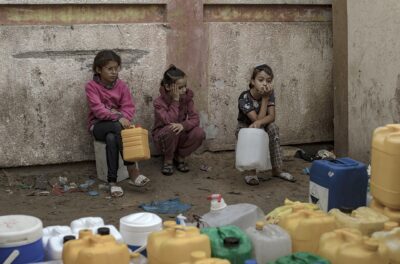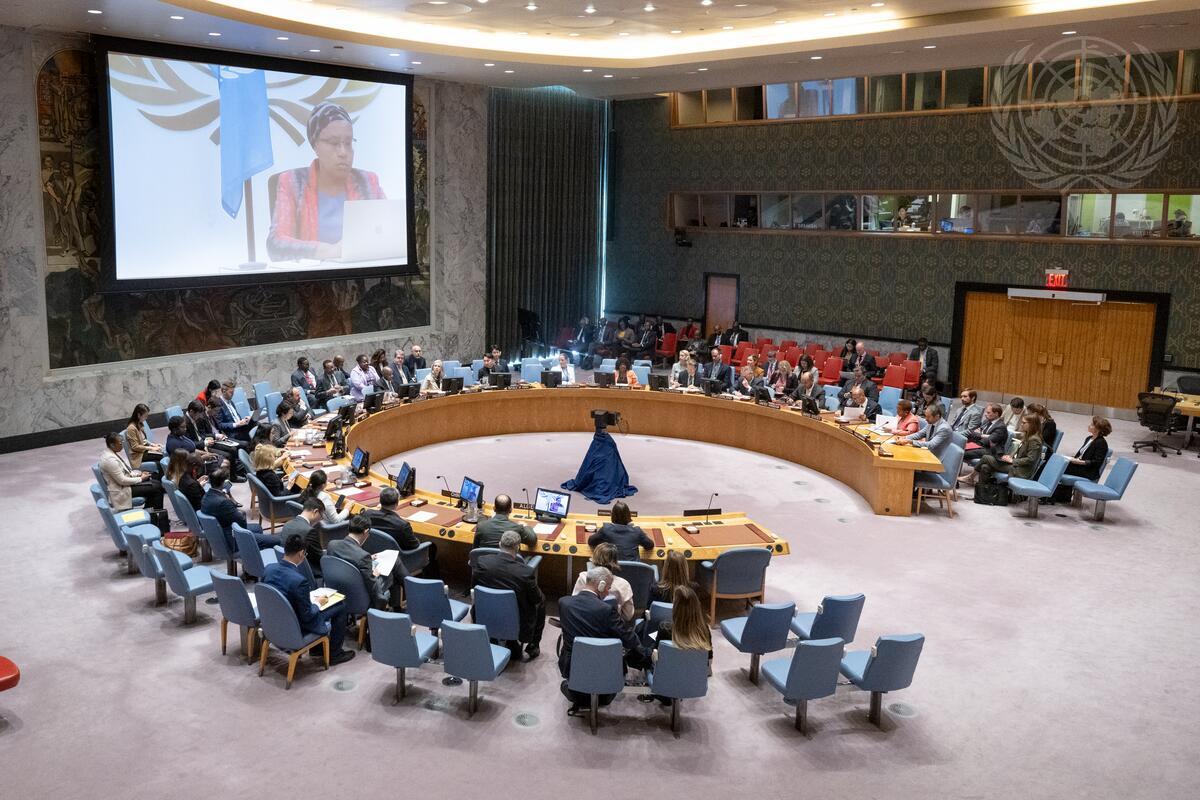The Environment, Peace and Security Agenda at the 2024 UNSC PoC Week
On May 21, the UN Security Council (UNSC) held its annual debate on the Protection of Civilians (PoC) in armed conflict, during which Member States reflected on the 25th anniversary of UNSC resolution 1265 (1999) and the Secretary-General’s 2024 PoC report. For the sixth consecutive year, this report included references to the direct and indirect environmental impacts of conflict on human security and health, as well as to climate security. Several Council Members, including Guyana, Mozambique, Sierra Leone, and Slovenia, and other Member States, such as Australia, Jordan, and Uruguay, also raised related issues from the environment-climate-conflict nexus and critical civilian infrastructure during the debate. While the increased attention of Member States to the issue of environmental protection as part of the PoC agenda is a welcome trend, it is crucial to support it by concrete actions to close the protection gap − including through adopting and operationalizing the UN system-wide Environment, Peace and Security (EPS) agenda.
Environmental risks for civilians in the Secretary-General’s PoC report
This year, the report’s priority focus was on the 25th anniversary of the very first protection mandate in UNSCR 1265 (1999), which originally established PoC as a vital concern to international peace and security. The report mentioned environmental degradation and climate emergency among the sources of civilian harm, citing such examples as urban destruction and damage to water infrastructure in Gaza and Sudan, and air strikes on fuel infrastructure and agro-industrial facilities in Ukraine, all coming with health risks for civilians due to air, soil and water pollution. The report also outlined the destructive effects of conflicts on biodiversity and nature – either from direct attacks, such as the destruction of the Kakhovka Dam in Ukraine, or as a result of illicit activities of non-State armed groups, such as in the Democratic Republic of the Congo or in Colombia. The report acknowledged the role of the climate change in exacerbating vulnerabilities of civilians whose access to resources had already suffered because of conflict, including in Libya, Niger, Nigeria, and Syria. One particularly noteworthy development is that the Secretary-General’s report stressed the need to ensure accountability for environmental damage in armed conflicts, and voiced support for establishing a crime of ecocide at the international level.
Protection of the environment in armed conflict as part of the broader UN agenda
The welcome acknowledgement of the risks for civilians associated with the environmental impacts of armed conflict in the Secretary-General’s PoC report is part of increasing international recognition of the need to address the environment-climate-conflict nexus at the UN level. In the last decade, protection of the environment in armed conflict has been discussed in international fora like the UNSC, General Assembly (UNGA), Environmental Assembly (UNEA), Human Rights Council (UNHRC), and Peacebuilding Commission (PBC). From adopting thematic resolutions[1] to convening briefings, debates[2], Arria Formula meetings[3], and side events[4] on the issue, Member States have increasingly recognized the negative consequences of conflict-induced environmental harm on the safety and well-being of civilians, either directly or indirectly through damage to critical civilian infrastructure.

However, the alarming realities facing civilians on the ground serve as a painful reminder of limited enforcement mechanisms dealing with the protection of the environment and people depending on it in armed conflicts. Many conflict parties do not adhere to the binding frameworks provided by international humanitarian law and human rights law. Despite the existence of such useful frameworks as the ICRC’s Guidelines on the Protection of the Natural Environment in Armed Conflict and the International Law Commission’s Principles on the Protection of the Environment in Relation to Armed Conflicts (PERAC Principles), their implementation remains limited, while such initiatives as the Political Declaration on Strengthening the Protection of Civilians from the Humanitarian Consequences Arising from the Use of Explosive Weapons in Populated Areas (EWIPA) are still far from universal support or implementation.
PAX advocacy around better protection of the environment in the PoC context
As existing international efforts to prevent, mitigate and address environmental harm in conflict remain ad hoc, disjointed, and underfunded, more can and must be done to protect the environment in armed conflict to improve international PoC capacities. Together with other members of the NGO Working Group on the Protection of Civilians, PAX continues to for the establishment of an UN system-wide Environment, Peace and Security (EPS) agenda to better protect civilians from conflict-linked environmental harm and the impacts of the environment-climate-conflict nexus. Such an agenda aims to integrate climate action, resilience, and environmental peacebuilding approaches across the national, regional, and international levels.
PAX also supported the launch of the Global Alliance to Spare Water from Armed Conflicts to advocate for better protection of water resources and related installations as a crucial step forward to improving international coordination to address conflict-linked environmental challenges. Initiated by Slovenia and Switzerland and presented during the 2024 PoC week, this initiative has been supported by Costa Rica, Jordan, Indonesia, Mozambique, Panama, Senegal, Viet Nam, UNICEF, PAX and Geneva Call. Together with Geneva Water Hub, PAX calls on all Member States to join in supporting the Global Alliance, as well as other key international tools aimed at improving the protection of environment, water, and essential civilian infrastructure in armed conflicts.

Please find more recommendations for Member States to support and improve the protection of the environment in armed conflict as part of PoC efforts here.
[1] For instance, UNSC resolutions 2417 (2018) and 2573 (2021), as well as in successive mandates and renewals for UNFICYP, UNMISS, UNAMI, UNSOM, and MINUSCA; UNGA resolution 76/L.75 (2022); UNHRC resolution 48/13 (2021); and UNEA resolutions 2/15 (2016), 3/1 (2017) and 6/12 (2024).
[2] Besides annual UNSC Open Debates on PoC, this includes UNSC Open debate on the humanitarian effects of environmental degradation and peace and security in 2020, as well as climate and security-related UNSC debates in 2007, 2011, 2018, 2019, 2020, 2021 (in February, September, and December), 2022 and 2023 (in February and June).
[3] Such as Arria-Formula meetings on Protection of the Environment in Armed Conflict in 2018 and 2019, on Protection of Civilians/Water in 2023, as well as several meetings on Climate Finance for Sustaining Peace and Security, and on Climate, Peace and Security in 2020-2023.
[4] Including UNSC “PoC Week” side events on “Protecting the Environment is Protecting Civilians” in 2020, 2021, 2022, 2023, and 2024, and on “Conflict, Climate Change and Displacement” in 2021, UNGA75 high-level side event on the humanitarian impact of combined conflict, climate and environmental risks in 2020, and UNGA78 side event on water and conflict in 2023.




